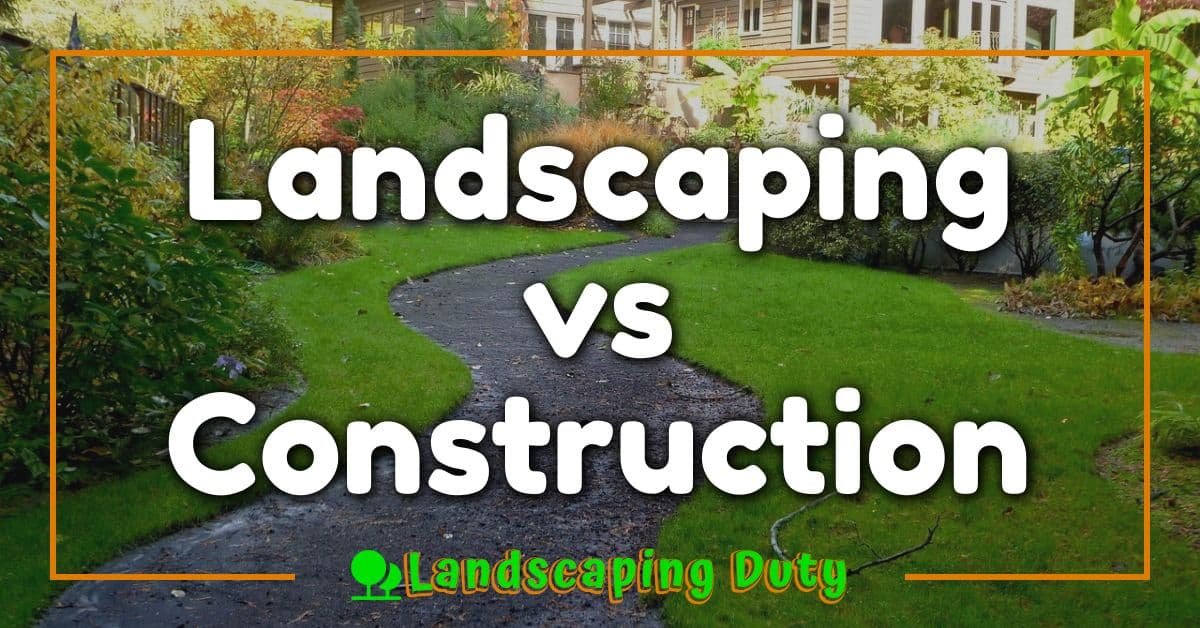Living in Alaska means embracing the stunning beauty of snowy landscapes and long daylight hours. But when it comes to landscaping, the cold climate presents unique challenges. I’ve spent years navigating these conditions, and I’m excited to share some tips that can help your garden thrive even in the harshest weather.

Choosing the right plants is crucial. Opt for hardy species that can withstand freezing temperatures and heavy snow. I’ve found that perennials like Siberian Iris and evergreens not only survive but add vibrant color and structure to your yard. Additionally, proper soil preparation and drainage can make a big difference in plant health.
With a bit of creativity and the right strategies, you can transform your Alaskan outdoor space into a beautiful, resilient haven. Let’s dive into some practical tips that will help you create a landscape you’ll love all year round.
Understanding Alaska’s Climate
Alaska’s climate features long, harsh winters and short, mild summers. Average winter temperatures range from -20°F in interior regions to 20°F along the southeast coast. Summers typically last 2 to 4 months, with temperatures between 60°F and 70°F.
Key Climate Factors
- Temperature Variations
Interior Alaska experiences extreme temperature swings, from -50°F in winter to 80°F in summer. Coastal areas maintain more moderate temperatures due to ocean influence.
- Growing Season Length
The growing season lasts approximately 100 days, limiting the types of plants that can thrive. Selecting plants with short growing cycles is essential.
- Snow and Frost
Heavy snowfall and frequent frost require plants to withstand prolonged cold and potential root damage. Mulching and proper plant selection help mitigate these effects.
- Permafrost Presence
Permafrost affects soil drainage and root penetration. Improving soil structure and using raised beds can enhance plant health in these areas.
Climate Zones in Alaska
| Climate Zone | Characteristics | Example Locations |
|---|---|---|
| Arctic | Extremely cold, permafrost, minimal vegetation | Barrow, Nome |
| Subarctic | Long, cold winters, short summers | Fairbanks, Anchorage |
| Maritime | Milder temperatures, higher precipitation | Southeast Coast, Juneau |
Understanding these climate zones helps in selecting appropriate plants and designing resilient landscapes.
Daylight Hours Impact
Alaska experiences significant daylight variation, from 20 hours of daylight in summer to 4 hours in winter. This affects plant growth cycles and requires selecting species that can adapt to varying light conditions.
By comprehending Alaska’s unique climate, I can make informed decisions to create a garden that thrives despite environmental challenges.
Selecting Cold-Hardy Plants
Selecting cold-hardy plants ensures your garden thrives in Alaska’s challenging climate. I prioritize species that endure freezing temperatures and brief growing seasons.
Perennials and Shrubs
Perennials and shrubs provide year-round structure and color. I choose plants based on their hardiness and low maintenance:
| Plant | Features | Cold Tolerance |
|---|---|---|
| Siberian Iris | Early blooms | Down to -40°F |
| Heuchera | Vibrant foliage | Down to -30°F |
| Juniper | Evergreen, snow-tolerant | Down to -40°F |
| Lilac | Fragrant blooms, minimal care | Suitable for cold zones |
Trees Suitable for Cold Zones
| Tree | Features | Cold Tolerance |
|---|---|---|
| White Spruce | Maintains structure under snow | Below -50°F |
| Paper Birch | Attractive bark, adaptable | Freezing conditions |
| Black Alder | Tolerates wet soils | Low temperatures |
| Aspen | Fast-growing, flexible trunk | Cold-resilient |
Soil Preparation and Drainage
Preparing soil in Alaska’s cold climate ensures plant health and longevity. I begin by testing soil pH, aiming for a range between 5.5 and 7.0, which suits most hardy plants. If needed, I adjust pH using lime to raise it or sulfur to lower it, following manufacturer guidelines precisely.
Improving soil structure enhances drainage and root growth. I incorporate organic matter, such as compost or well-rotted manure, at a rate of 2 inches per garden bed. This addition increases soil permeability, reduces compaction, and provides essential nutrients.
Installing proper drainage systems prevents waterlogging during thaw periods. I utilize gravel trenches or French drains in areas prone to excess moisture. These systems redirect water away from plant roots, minimizing the risk of root rot and promoting healthy growth.
Mulching plays a crucial role in moisture retention and temperature regulation. I apply a 3-inch layer of mulch around plants, ensuring it doesn’t touch stems or trunks. Mulch conserves soil moisture, suppresses weeds, and protects roots from extreme temperature fluctuations.
Addressing permafrost is essential for plant stability. I elevate garden beds using raised platforms or mounds, allowing roots to penetrate deeper into the active soil layer. This technique avoids the impermeable permafrost layer, facilitating better drainage and nutrient uptake.
| Soil Amendment | Application Rate | Purpose |
|---|---|---|
| Compost | 2 inches per bed | Enhance fertility and structure |
| Lime | As per soil test results | Adjust pH levels |
| Sulfur | As per soil test results | Lower pH levels |
By implementing these soil preparation and drainage strategies, I create a resilient garden environment that thrives despite Alaska’s challenging climate.
« Landscaping in Prairie Climates: Expert Tips for Thriving, Sustainable Gardens Building a Hardscape Pet Area: Create a Durable & Stylish Space for Your Pets »
Designing for Winter Conditions
Designing your garden to withstand Alaska’s winter ensures plants thrive year-round. Strategic planning addresses the challenges posed by extreme cold and limited sunlight.
Plant Placement and Sunlight
Position plants where they receive maximum sunlight during short days. South-facing areas capture more light, essential for growth. Group plants with similar sunlight needs together to optimize their exposure. Utilize reflective surfaces like white walls to enhance light distribution, aiding photosynthesis even in low light conditions.
Protective Landscaping Features
Incorporate windbreaks to shield plants from harsh winter winds. Use evergreen shrubs or fences strategically to reduce wind speed around sensitive areas. Install snow fences to manage snow distribution, preventing accumulation that can damage plants. Apply mulch around plant bases to insulate roots, maintaining soil temperature and moisture levels during freezing periods.
Sustainable Landscaping Practices
Implementing sustainable landscaping practices enhances garden resilience and minimizes environmental impact in Alaska’s cold climate.
Native Plant Selection
Choosing native plants like Arctic willows, Labrador tea, and bearberry supports local ecosystems. These species adapt to harsh temperatures and require less maintenance.
Efficient Water Management
Installing drip irrigation systems reduces water usage by delivering moisture directly to plant roots. Collecting rainwater during the short summer season provides an additional water source.
Soil Health Maintenance
Amending soil with organic matter improves fertility and drainage. Regularly testing soil pH ensures optimal conditions for plant growth.
Mulching Techniques
Applying mulch conserves soil moisture and regulates temperature. Organic mulches such as pine needles and shredded bark decompose slowly, enriching the soil over time.
Wildlife-Friendly Practices
Creating habitats with shrubs and berry-producing plants attracts beneficial wildlife. Incorporating birdhouses and insect hotels promotes biodiversity in the garden.
Energy-Efficient Design
Positioning plants to maximize natural sunlight reduces the need for artificial lighting. Utilizing windbreaks made of evergreen trees protects plants from harsh winter winds.
Perennial Plant Selection
Selecting perennials like Siberian Iris and evergreen shrubs ensures long-term garden stability. These plants withstand freezing temperatures and rebloom each season.
Composting
Recycling garden waste through composting enriches soil with essential nutrients. Finished compost improves soil structure and supports healthy plant growth.
Minimal Chemical Use
Avoiding synthetic fertilizers and pesticides preserves soil health and protects wildlife. Opting for organic alternatives maintains a safe and sustainable garden environment.
Recycling and Reusing Materials
Incorporating recycled materials, such as reclaimed wood for garden beds, reduces waste and conserves resources. Reusing containers for plant propagation supports sustainable practices.
Seasonal Maintenance Tips
Spring
As temperatures rise, I focus on preparing the garden for the growing season. Clearing snow and debris ensures better sunlight exposure. I inspect plant health, trimming any damaged branches from evergreens and shrubs. Fertilizing the soil with organic matter promotes strong root growth, while mulching helps retain moisture and regulate soil temperature.
Summer
During the short summer months, I maintain consistent watering, especially for native perennials and trees. Monitoring for pests and diseases is crucial, allowing me to address issues promptly. Regular weeding prevents competition for nutrients, and deadheading flowers encourages continuous blooming. I also check irrigation systems to ensure efficient water distribution.
Fall
In fall, I prepare plants for the upcoming winter. I prune perennials and remove spent flowers to reduce disease risk. Adding a thick layer of mulch protects roots from freezing temperatures and heavy snowfall. I clean garden beds, removing any remaining plant material to prevent pests from overwintering. Additionally, I plant fall bulbs that will bloom in the next spring.
Winter
Winter maintenance involves protecting plants from extreme cold and heavy snow. I use burlap wraps for sensitive shrubs and trees to shield them from frost and wind. Ensuring proper drainage prevents water from pooling and damaging plant roots. I also inspect structures like pergolas and trellises, reinforcing them to withstand snow loads. Regularly clearing snow from pathways and plant areas maintains accessibility and reduces the risk of breakage.
Year-Round Tasks
Regardless of the season, I regularly test soil pH levels to maintain optimal conditions for plant growth. Composting kitchen and garden waste enriches the soil, while recycling materials supports sustainable landscaping practices. By staying proactive with these maintenance tips, my Alaskan garden remains resilient and beautiful throughout the year.
Conclusion
Gardening in Alaska has its challenges but it’s incredibly rewarding. I’ve found that with the right plants and a bit of care your garden can thrive despite the cold.
Embracing sustainable practices not only makes your garden resilient but also supports the local ecosystem. It’s amazing to see how small changes can make a big difference.
If you’re willing to put in the effort the beauty of an Alaskan garden is worth it. Happy gardening!
















